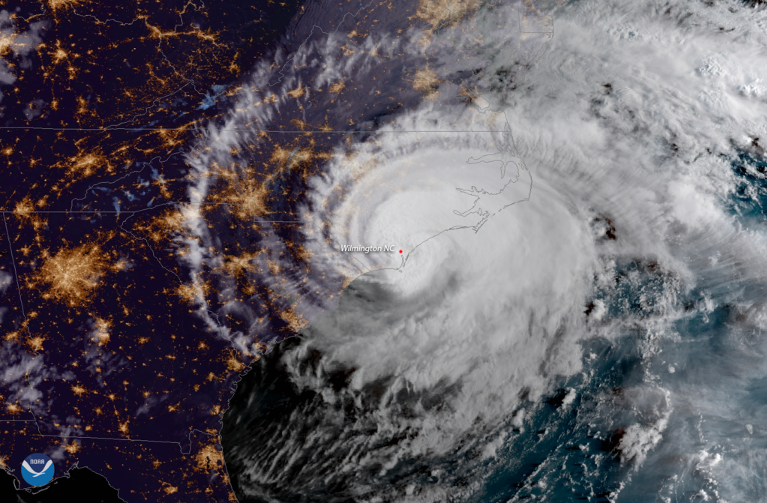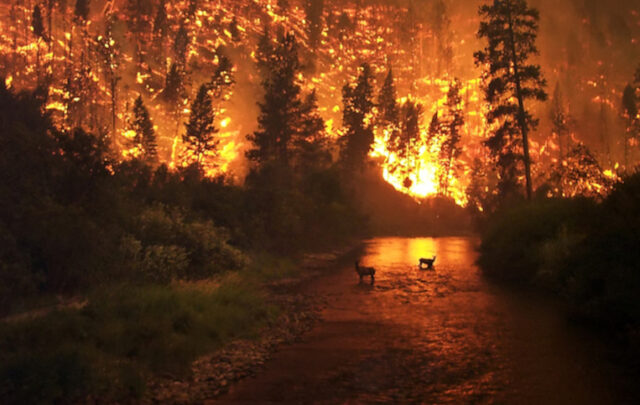A second breach was reported at a coal ash landfill site in North Carolina on Monday according to the Environmental Protection Agency (EPA), the latest impact from Hurricane Florence’s heavy rains. That update comes amid a state of emergency declared at a nuclear power plant overseen by the landfill’s operator, Duke Energy, as the extent of the damage from Florence — now a tropical depression — slowly becomes apparent.
The first Duke Energy Corp. coal ash landfill site experienced a breach on Saturday following an initial spill at the company’s Sutton Power Plant, which is near Wilmington where Florence first made landfall.
Reggie Cheatham, the EPA’s director for its Office of Emergency Management, told reporters Monday that the second spill occurred when some of the landfill’s water eroded, Bloomberg reported. The location of the second breach is not currently known to the EPA.
Duke, however, has disputed the EPA’s characterization that there had been a second breach. “This is all part of the same erosion event from heavy rains, but does not represent a second slope failure,” spokesperson Paige Sheehan told Bloomberg.
Coal ash has been a source of concern for officials and environmental groups monitoring Florence’s path. Such landfill sites can contain toxic mercury, arsenic and lead, among others, and pose a danger to human health as well as the environment. The initial breach over the weekend spilled roughly 2,000 cubic yards of coal ash, Duke said, but the EPA indicated that no coal ash is believed to have reached Cape Fear River, located nearby, although it did hit Sutton Lake.
It is unclear how close the second breach might be to the river, which is already suffering from the impacts of Florence.
After a wastewater treatment plant lost power in Wilmington over the weekend, partially treated sewage flowed into the river. The American Water Works Association has reported 28 water utilities have issued boil-water advisories to people in the region in connection with damage attributed to Florence.
That’s not the only crisis playing out. Thirty miles south of Wilmington, Duke Energy’s Brunswick nuclear plant has declared a state of emergency. The plant’s 1,200-acre complex is currently cut off to outside personnel by flood waters and workers are stranded.
The situation is considered an “unusual event”, which signals a nuclear emergency on the lowest levels, but Nuclear Regulatory Commission (NRC) spokesperson Joey Ledford said Monday that the plant currently poses no threat to public safety.
“The plant is safe,” Ledford said. “The reactors are in hot stand-by mode 3 shutdown.”
Nearly 300 Duke workers and NRC personnel, however, have been stranded at the plant for days due to flooding, some as far back as Wednesday. Some workers have been able to leave to check on their homes and families. But Ledford noted that roadway blockages linked to flooding would now make it impossible to evacuate the plant’s 10-mile evacuation zone if the threat level were to increase.
Across the region, related points of concerns are being reported. A Chemours Co. plant that produces toxic chemicals like PFAS (found in Teflon) is currently inaccessible to state inspectors thanks to Florence’s impacts.
Officials and advocates are also nervously monitoring North Carolina’s “hog-manure lagoons,” which have historically taken a hit during hurricanes and contaminated waterways.
Gov. Roy Cooper (D) said Sunday that the hog lagoons so far appear safe from Florence’s onslaught, but some experts have questioned those claims, arguing swine farms could be completely submerged based on the storm’s path. By Monday afternoon, several hog farms were confirmed to be suffering impacts.
At least 23 people have died in North and South Carolina so far during the historic storm. Around half a million people in the region are without power, with more damage expected as Florence continues to rage.
This story has been updated.





